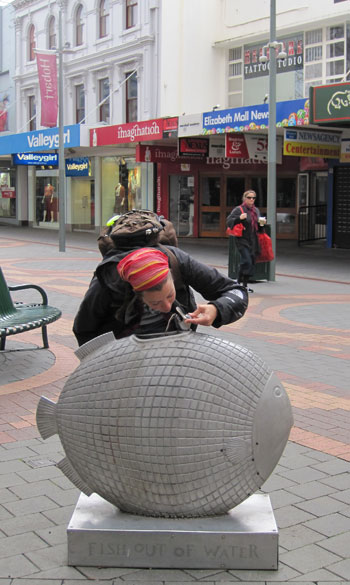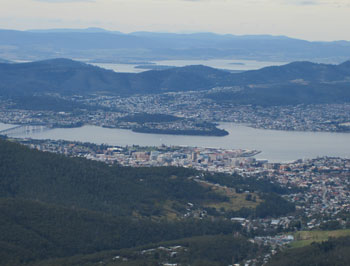Meet, Meeting, Meetings
Add Summary

Blogger: Abigail Lynch, a doctoral candidate in the Department of Fisheries and Wildlife and a CSIS member, blogs from Down Under -- she's in Australia to build a framework for her dissertation research. She's interested in developing a decision-support tool to regulate harvest management strategies for lake whitefish in a changing climate.
Meet, Meeting, Meetings
Aug. 1, 2011
I guess you get what you ask for when you want to meet with as many people as you can over a short period of time. Today was back to back meetings for me, but I’m just thankful that all these important folks have made time to meet with me while I’m here!
 First, I met with Tony Smith upon the recommendation of Mike Jones from graduate school at
First, I met with Tony Smith upon the recommendation of Mike Jones from graduate school at
UBC and his time here on sabbatical. Tony is the Ecosystem Based Management Stream Leader here at CSIRO (Commonwealth Scientific and Industrial Research Organisation) and a fountain of information on harvest policy analysis. A major takeaway for me from meeting with Tony development of a workable timeline. He stressed the importance of allotting enough time to evaluation of a model and application to management. For my project, ideally, I would be able to produce an operating model of the system within the next year, then hold a stakeholder meeting to determine the range of management options available with that operating model, and lastly conduct a management strategy evaluation of those options to determine the most feasible, viable option forward.
Next, I met with Beth Fulton, a science fellow here at CSIRO and ATLANTIS, a world-renown, complex, whole-of-ecosystem model for the southern oceans, is her brain-child. One of Beth’s first recommendations was to keep the modeling approach as simple as possible. For my system, I need to determine which are the important factors to consider (and consider all the effects that these factors have on the system) and begin my analysis from there. There is a “critical sweet spot” in modeling where there is enough information to conduct a realistic assessment without overloading the modeling and degrading it with error.
Then, I had my next meeting with Alistair Hobday where we discussed methods for integrating environmental variables into my project. Of the spectrum of model complexity, Alistair’s helped me outline what are likely to be the three most applicable to my project: traditional stock assessment, species distribution models, and more statistical approaches (e.g., general linear models). Depending on where management can influence the fishery (abundance, distribution, timing) will influence the applicability of each method to my study system. Taking a more ensemble approach, in addition to gaining experience in range of approaches, also provides an interesting study system for management application. What level of resolution in model complexity is necessary for decision makers to make a decision?
 Lastly, I met with Geoff Tuck about fisheries assessment techniques and potential applications to my project. It was a good segway from the stock assessment methods that I discussed with Alistair earlie
Lastly, I met with Geoff Tuck about fisheries assessment techniques and potential applications to my project. It was a good segway from the stock assessment methods that I discussed with Alistair earlie



 Print
Print Email
Email





